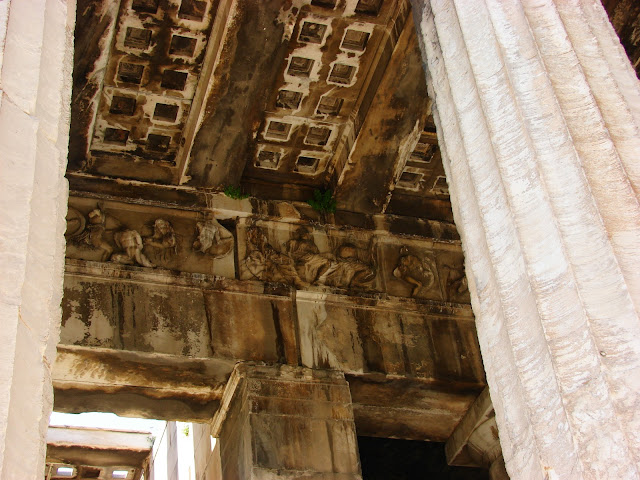Avila, which stands in the surrounding of medieval walls, is very picturesque city. At the first glimpse, may seem that the Avila reminiscent of the one of the eastern cities. But when you approach to the city all memory of the East is dispersing with emergence of the endless number of medieval Christian churches.
Avila, the capital of the Spanish province, is most alpine city in the country. The city located at the altitude of the 1130 meters. The city already was known under the name of Ovila in the Celtiberians times. The fact that Avila in the ancient times was very important political and trade center can be traced by the numerous remains of these times such as sculptures and survived parts of the buildings.
Avila. Church San Pedro. Photo provided by the Selbymay under CC BY 3.0 license
In the 714 Avila has been captured by the Moors and after the three centuries it was gained by the troops of Raimundo de Borgonya. By the order of the Castilian king all Moors were evicted from the Avila and the city was populated by the famous families from the Leon, Asturias and Galicia.
Soon after, Avila become one the significant centers in the Castilia. During the long period Avila stood at the border between Moors and Christian and with the Salamanca the city was called as the “fortress of the Christian world”. Then Avila was the city-fortress and even today a lot of buildings in the central part of the city look like the citadel than the ordinary houses.
Avila. City Walls. Photo provided by the Yildori under CC BY 3.0 license
Avila often served as the residence of the Castilian kings. Also it was one of the popular pilgrim centers.
Today the city has one of the best preserved medieval ensembles in Europe. Avila is very popular among the sightseers and tourists are huddling on the cities streets.
Avila sights
The main attraction of the city is the old fortress with 88 towers which stand after every 25 meters. Total length of the walls is 2526 meters. Today Avila is most powerful and best preserved fortress in Spain.
The oldest church in the town - is the small San-Andres church which originates from the 11 century. In the ornament of church you can see the influence of the masters from the North Spain and most probably this church has been built by the masters from Leon. Another prominent old church in Avila – is a San-Pedro which has been built in the 12 century.
Most prominent church of Roman style in Avila – is church of San-Vicente which has been built in the 12 century. According to the legend this church stands over the burial place of two saints. The construction of the church lasted during the century, so San-Vicente was finished in the 13 century.
Avila. Church of San Vicente. Photo provided by the Selbymay under CC BY 3.0 license
The façade of the San-Vicente differs by the sparse style and décor. For me, the most interesting are the scenes of fight between virtue and vice which can be seen on the south portal.
The church of San-Segundo (1519) has been built over the tomb of the Saint Segundo who baptized the city.
The Cathedral of Avila another prominent example of the church architecture of the city. Don’t miss the central altar of the Cathedral which was made from the walnut in 1555 by the Cornelius from the Netherlands. The nine chapels of the Cathedral were built in the different time and serve as the burial place for the prominent people of Avila.
In the Middle Ages Avila was called as the “city of stones and saints”. This city which stands in the stone area at the shore of the Adacha river – is the one of the focal centers of pilgrimage in Spain.
But Avila can boast not only by the church architecture. In the city you can find a lot of civilian buildings as well. For example, the Palace of Polentinos which has been built in the 1535. The patio of this building – is the best example of the Renaissance in the city.
Avila. Palace of Polentinos. Photo provided by the Dahis under CC BY 3.0 license
Another prominent examples of Renaissance in the city are Palace of los Aguilas and Casa de los Davila.
And to feel some bustle of the medieval city, after the exploring such places of tranquility as churches and abbeys, visit the central market of the city. It seems that the market still has east spirit. And prowling and huddling on the market is the best way to feel the spirit of the Middle Ages in the city.
Avila. Placa del Mercado . Photo provided by the Elena F D under CC BY 3.0 license














.JPG)



































